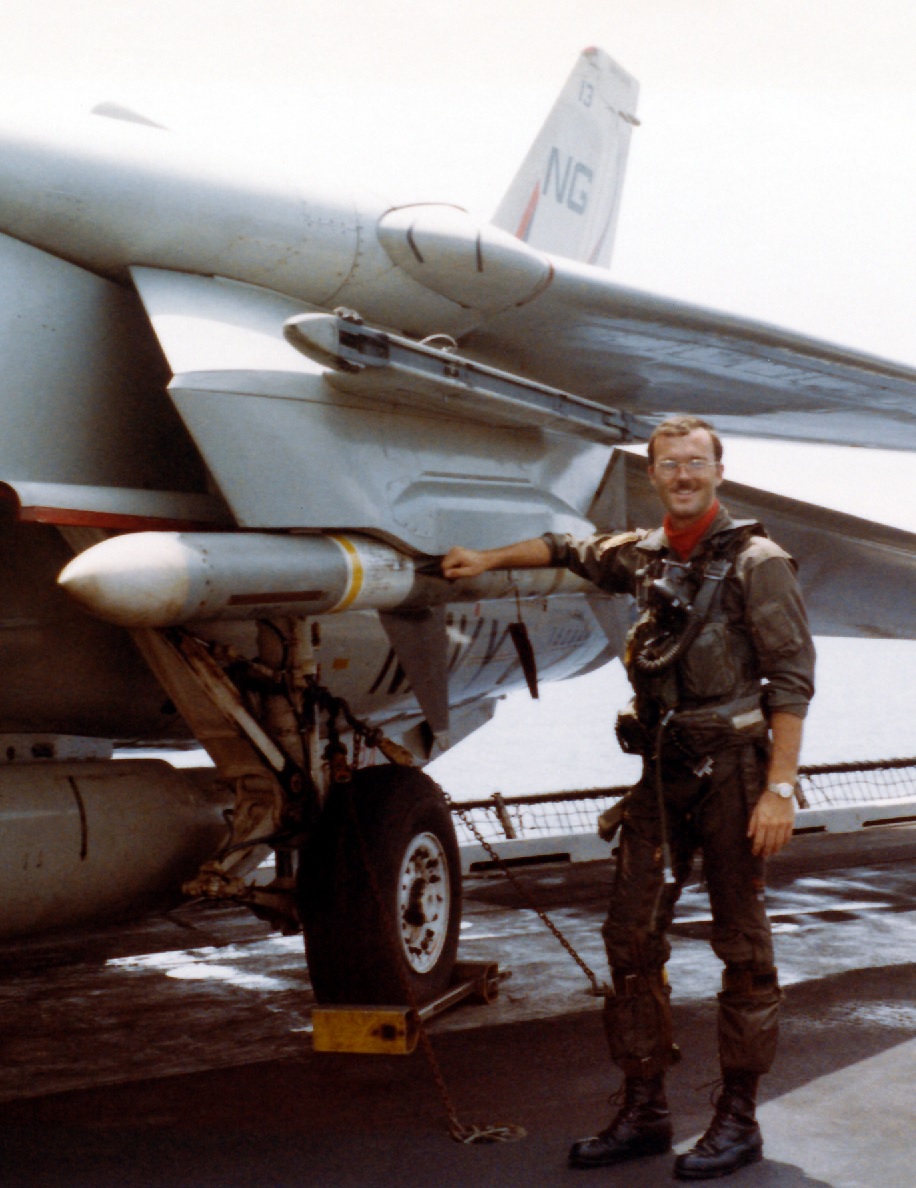“Halfway through the turn, my “radar lock” lights went out. I had messed up the intercept! ‘Broke lock,’ I growled to Drifty. ‘Going to search.’ I didn’t have to include the dammit!” Dave “Bio” Baranek, F-14 Tomcat RIO
Dave “Bio” Baranek found success and fulfillment serving in the Navy for 20 years. He began his career with assignments to F-14 squadrons as a Tomcat Radar Intercept Office (RIO) and in the prestigious TOPGUN training program. Later, he was assigned to the Joint Chiefs of Staff and the US 7th Fleet. He commanded an F-14 Tomcat fighter squadron, which was in charge of fourteen aircraft valued at over $700 million and close to 300 people. Upon his retirement, he logged 2,499.7 flying hours in an F-14 Tomcat and 688 carrier landings.
The first of the American teen-series fighters, the Grumman F-14A Tomcat, was built to integrate lessons learned during air combat against MiG fighters in the Vietnam War. The F-14 was an excellent dogfighter, but the Tomcat’s ability to defend the fleet’s air space was what set it apart. In order to complete this mission, the aircraft was outfitted with the powerful AWG-9 weapons system, which supported the AIM-54 Phoenix, offered an unheard-of one hundred-mile range, and had a small onboard radar to help it locate the target in the last stages of flight.

The remarkable capabilities of the AWG-9 required the need for a RIO in the F-14’s back seat in order to optimize it at different stages during a mission.
Among all the training scenarios encountered by a Tomcat crew, one of the most difficult ones for a RIO would have been a “MISSILEX” (a Missile Exercise, in which a “live” missile is fired against a drone that imitates an airborne target). Baranek describes the second AIM-7 Sparrow he ever shot in his book Before Topgun Days. In December 1982, while serving with the VF-24 Fighting Renegades Fleet squadron, he and Lieutenant Commander Steve “Drifty” Smith were chosen to fire a Sparrow at a target over the Pacific Ocean off Southern California.
The drone and the Tomcat had to fly supersonic because the missile shot had to follow a test and evaluation (T&E) profile. This requirement added another level of complexity to the already difficult drill scenario.
Drifty shoved the throttles to Zone 5, the F-14A’s highest afterburner, as they got closer to the launch range. They accelerated over Mach 1, and an A-6 Intruder from the Pacific Missile Test Center fired an AQM-37 target drone.
Let’s join Bio again in the Tomcat cockpit to live with him the tense moments he experienced during the MISSILEX: “Our range to the target was thirty miles. That may sound like a long distance, but we were supersonic, and so was the drone. Add the two speeds, and you find that the range was shrinking by more than two thousand feet each second. […] One minute after the start [of the intercept], we were at the right range and angle to launch the Sparrow. I pushed the red ‘missile launch’ button. The 500-pound weapon jumped off the jet with a strong thump—that was the small explosive charges that made sure it cleared the plane—and rocketed out ahead of us. […] I sweated the radar picture. I had two small green lights indicating the radar was still locked on the drone. But the track was near the edge of my scope. If it went off the scope, that meant the radar antenna could not turn enough to follow target. Our radar would break lock, the AIM-7 would go ‘stupid,’ and I would have to try to find that little drone again. That was hard enough when fighter and target were going 300 knots or less; at over 600 knots… I didn’t want to think about it. Halfway through the turn my “radar lock” lights went out. I had messed up the intercept! ‘Broke lock,’ I growled to Drifty. ‘Going to search.’ I didn’t have to include the dammit! that I was thinking. ‘Bio, relax,’ Drifty drawled. ‘It was a direct hit. We broke lock because the target is gone. We just blew it out of the sky.’”
Photo by all images used with permission of author Dave “Bio” Baranek

